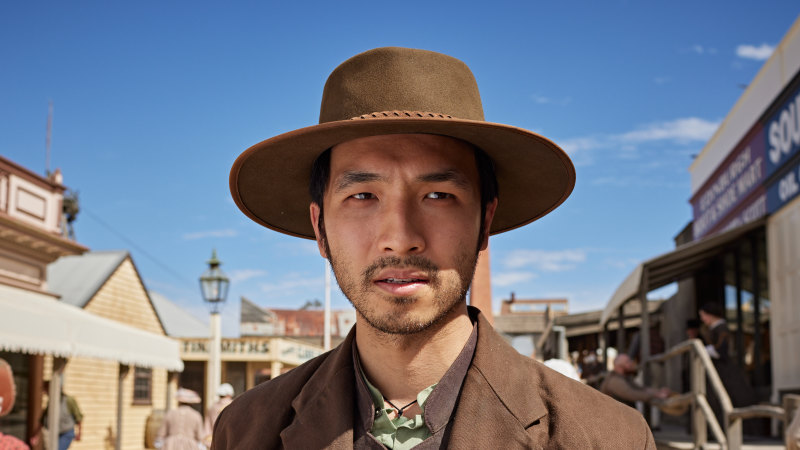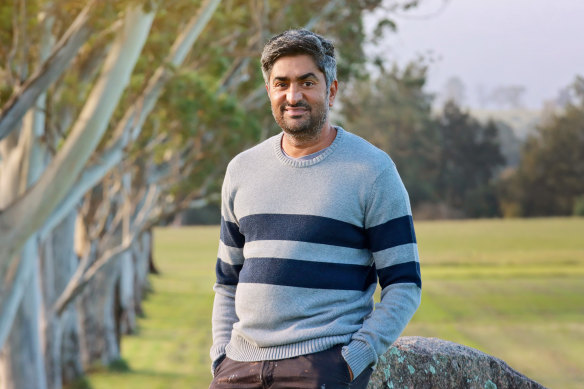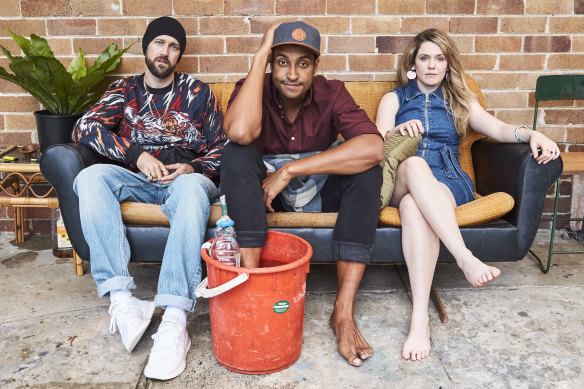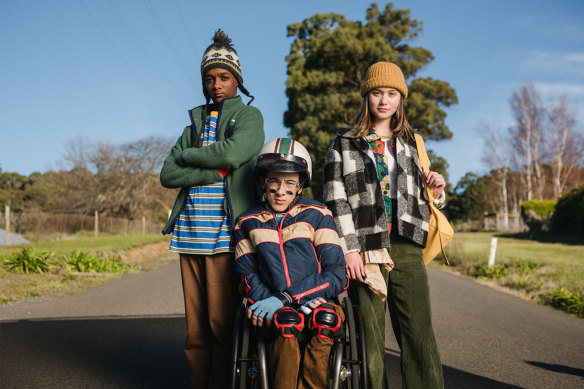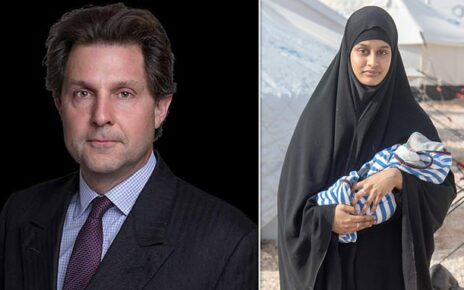Save articles for later
Add articles to your saved list and come back to them any time.
Chum Ehelepola isn’t quite a unicorn, but he’s definitely a rarely spotted creature: an actor of Sri Lankan heritage who has played a main character on an Australian TV drama.
“Being a diverse actor in Australia is a huge challenge,” says Ehelepola, who played Dennis, the acerbic chief of staff on The Newsreader, one of 2021’s most successful home-grown dramas (its second season will be on the ABC later this year). “We don’t often see people who look like me on TV unless it is in token or small roles.”
Chum Ehelepola, who played The Newsreader’s chief of staff, Dennis. Credit: Angi High
Born in New Zealand but raised in his parents’ homeland, Ehelepola is a member of what the latest report into diversity from Screen Australia classifies as the Southern and Central Asian group.
According to the Seeing Ourselves Report, which is released today, that group makes up around 7 per cent of the Australian population as a whole, but just 2.8 per cent of main characters.
In 15 years of acting in Australia, says Ehelepola, “The Newsreader was one of the few times I’d had a role that wasn’t about my ethnic background. As an artist, that is very validating.”
But in the two years since, he adds, it’s become far more common – for him at least. “I haven’t stopped working in roles that are pushing cultural barriers and aren’t subscribing to tokenism,” he says.
Christiaan Van Vuuren, Matt Okine and Harriet Dyer in The Other Guy.Credit: Stan
The second Seeing Ourselves Report covers the years 2016-2021, and examines 3072 main characters across 361 scripted programs (drama, comedy and children’s, but not animation) made for TV, streamers and online platforms such as YouTube and TikTok. Netflix’s 2022 series Heartbreak High, in which the 1990s series was reimagined with a groundbreaking commitment to diversity, was not included as it fell outside the five-year survey period.
The first report, in 2016, covered 1961 characters in 199 scripted programs broadcast in the years 2011-15 (the increase in program and character numbers is largely attributable to the rise of streaming and commissioned content for online platforms in the intervening period).
And while the new report finds diversity is increasing in all areas, it also concludes there’s plenty of work still to be done before what’s on our screens mirrors the reality of modern Australia.
There are now twice as many main characters of a non-European background than there were five years ago, and First Nations characters are roughly twice as prevalent on our TV screens as they are in the general population. But despite some significant improvements, ethnic, disabled and LGBTIQ+ characters remain under-represented as a whole.
The report defines a main character as one who typically appears in each episode. The titles considered had seven main characters each on average.
“There have been increases in the levels of diversity among main characters in TV drama since our 2016 study, including increased representation of First Nations, disabled and LGBTIQ+ characters, and a doubling of non‑European representation,” the report’s authors noted.
However, a number of Australia’s non-Anglo communities remain under‑represented on screen. Among the least represented are people with Indian, Chinese, Filipino and Vietnamese ancestry. Perhaps more surprisingly, some European nationalities are also under-represented, including people with German, Dutch and Italian ancestry.
About one-quarter of Australian TV dramas in the survey period featured a main cast of only Anglo‑Celtic characters. That was, however, an improvement on the first survey, where one-third were exclusively populated by white Australians.
Basil Firea, Oli Pizzey-Stratford and Jade Knight in The Legend of Burnout Barry. Characters with a disability remain massively under-represented on our screen. Credit: ABC
In the real world, 47 per cent of Australians are from a non Anglo-Celtic background.
Disability remains very much under‑represented in TV drama compared with the Australian population, the report found, with just 3.9 per cent of actors in main roles publicly identifying as disabled. Around 18 per cent of the Australian population reports living with a disability.
“I’m really happy to see movement in all the categories, but we need to work with the sector to increase the rate of change,” says Screen Australia chief executive Graeme Mason.
In an ideal world, he adds, it would not be necessary for an actor to be overtly identified as or to specifically play a character who was gay, disabled, or from a particular ethno-cultural group. “The goal is literally to have people living their lives as they do in the country as a whole,” he says.
Such things are increasingly being taken into consideration from the inception of a program, not just in terms of what the characters look like, but also who is creating them, and for whom they are being created.
“I do believe it’s continuing to move, and it has to – culturally, creatively and commercially,” Mason says. “People need to be able to see themselves onscreen, especially as they’re growing up. It’s the classic thing of ‘you can’t be it if you can’t see it’.”
Find more of the author’s work here. Email him at [email protected], or follow him on Facebook at karlquinnjournalist and on Twitter @karlkwin.
Find out the next TV, streaming series and movies to add to your must-sees. Get The Watchlist delivered every Thursday.
Most Viewed in National
From our partners
Source: Read Full Article
